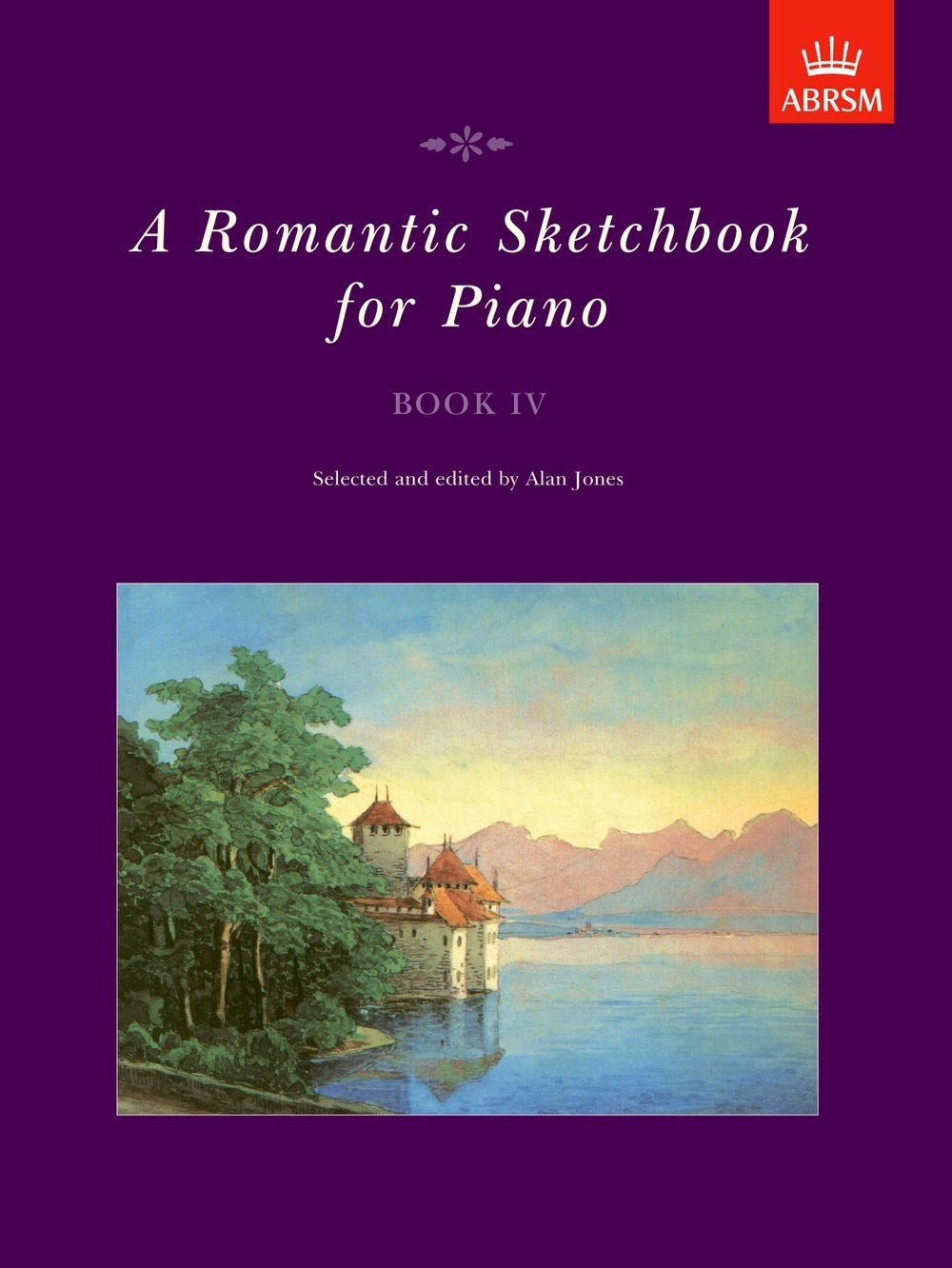A Romantic Sketchbook for Piano - Book 4
In stock and typically ships within 1 business day.
- Composers: Heinrich Hofmann (1842-1902), Henryk Pachulski (1859-1921), César Cui (1835-1918), Moritz (Maurice) Moszkowski (1854-1925), Claude Debussy (1862-1918), Anatoly Lyadov (1855-1914), Erik Satie (1866-1925), Alexander Scriabin (1872-1915), Edvard Grieg (1843-1907), Charles-Valentin Alkan (1813-1888), Modest Mussorgsky (1839-1881), Adolf Jensen (1837-1879), Robert Schumann (1810-1856), Johann Friedrich Burgmüller (1806-1874), Reinhold Glière (1875-1956), Pyotr Ilyich Tchaikovsky (1840-1893), Max Bruch (1838-1920), William Alwyn (1905-1985), César Franck (1822-1890), Ernst Haberbier, Felix Mendelssohn (1809-1847), Stephen Heller (1813-1888), Carl Nielsen (1865-1931), Charles Villiers Stanford (1852-1924), Max Reger (1873-1916)
- Instrumentation: Piano
- ISBN:
- Size: 9.1 x 11.9 inches
Description
The five volumes in the Romantic Sketchbook series comprise an imaginative selection fromthe riches of the Romantic piano repertoire. Each volume balances works by leading Romantic composers, such as Schumann, Mendelssohn and Tchaikovsky, with unfamiliar pieces by lesser-known figures. The volumes are carefully graded and offer a variety of keys, time signatures, textures and tempi, aswell as moods and styles to develop interpretative skills.
Works:
- Mai, lieber Mai from R. Schumann: Album for the Young (Album for die Jugend), Op. 68
- Mendelssohn: Moderato in A Major, MWV U 73, Op. 19b, No. 4
- Le premier billet doux, No. 46 from Alkan: 48 Motifs (Esquisses), Op. 63
- Cloche des matines, No. 9 from F. Burgmüller: 18 Études, Op. 109
- No. 10 in C-sharp Minor from Heller: 24 Préludes, Op. 81
- Franck: Danse lente, CFF 25, FWV 22
- Haberbier: Prelude, Op. 59, No. 1
- Mussorgsky: Une Larme (A Tear) (1880)
- Jensen: Lieder and Tänze (Songs and Dances), Op. 33
- Le petit cavalier, No. 3 from Tchaikovsky: Album for the Young (Детский альбом), ČW 150-173, Op. 39
- Bagatelle italienne, No. 2 from Cui: 4 Pieces, Op. 22
- No. 2 from Bruch: 6 Piano Pieces, Op. 12
- H. Hofmann: Zur laute from Nachklänge - Book 2, Op. 37
- LIttle Bird from Grieg: Lyric Pieces (Book III), Op. 43
- Stanford: No. 10 in E Minor from 24 Preludes, Op. 163
- Bagatelle, No. 7 from Moszkowski: Dix Petits Morceaux, Op. 94
- Maurka, No. 3 from Lyadov: 3 Pieces, Op. 57
- Debussy: Le petit Nègre, CD 122, L 114
- Nielsen: Mignon, No. 4 from Fem klaverstykker (5 Piano Pieces), CNW 81, Op. 3
- Pachulski: Moment musical, No. 1 from 3 Pieces, Op. 22
- No. 1 from Satie: Gymnopédies (1888)
- Glière: Prelude, No. 1 from 8 Pièces Faciles, Op. 43
- No. 3 from Scriabin: 6 Préludes, Op. 13
- Alwyn: April Shower
- Reger: No. 1 from Improvisationen (8 Improvisations), Op. 18
Publishers use a lot of words to describe what they sell, and we know it can be confusing. We've tried to be as clear as possible to make sure you get exactly what you are looking for. Below are descriptions of the terms that we use to describe the various formats that music often comes in.
Choral Score
A score for vocalists that only contains the vocal lines. The instrumental parts are not there for reference. Generally, cheaper than a vocal score and requires multiple copies for purchase.
Facsimile
Reproductions of the original hand-written scores from the composer.
Full Score
For ensemble music, this indicates that the edition contains all parts on a single system (there are not separate parts for each player). In larger ensembles, this is for the conductor.
Hardcover
Hardbound. Generally either linen-covered or half-leather.
Orchestral Parts
Similar to a wind set, this is a collection of parts. In the case of strings, the numbers listed are the number of copies included, though generally these are available individually (often with minimum quantities required).
Paperback
When publishers offer multiple bindings (e.g. hardcover) or study scores, this is the "standard" version. If you're planning to play the music, this is probably what you want.
Performance / Playing Score
A score of the music containing all parts on one system, intended for players to share. There are not separate parts for each player.
Set of Parts
For ensemble music, this indicates that there are separate individual parts for each player.
Solo Part with Piano Reduction
For solo pieces with orchestra, this is a version that contains a piano reduction of the orchestra parts. For piano pieces, two copies are typically needed for performance.
Study Score
A small (think choral size) copy of the complete score meant for studying, and not playing. They make great add-ons when learning concertos and small chamber works.
Vocal Score
A score prepared for vocalists that includes the piano/organ part or a reduction of the instrumental parts.
Wind Set
For orchestral music, this is a collection of wind and percussion parts. The specific quantities of each instrument are notated.
With Audio
In addition to the printed music, the edition contains recordings of the pieces. This may be an included CD, or access to files on the internet.
With / Without Fingering (Markings)
Some publishers prepare two copies - a pure Urtext edition that includes no fingering (or bowing) suggestions and a lightly edited version that includes a minimal number of editorial markings.


